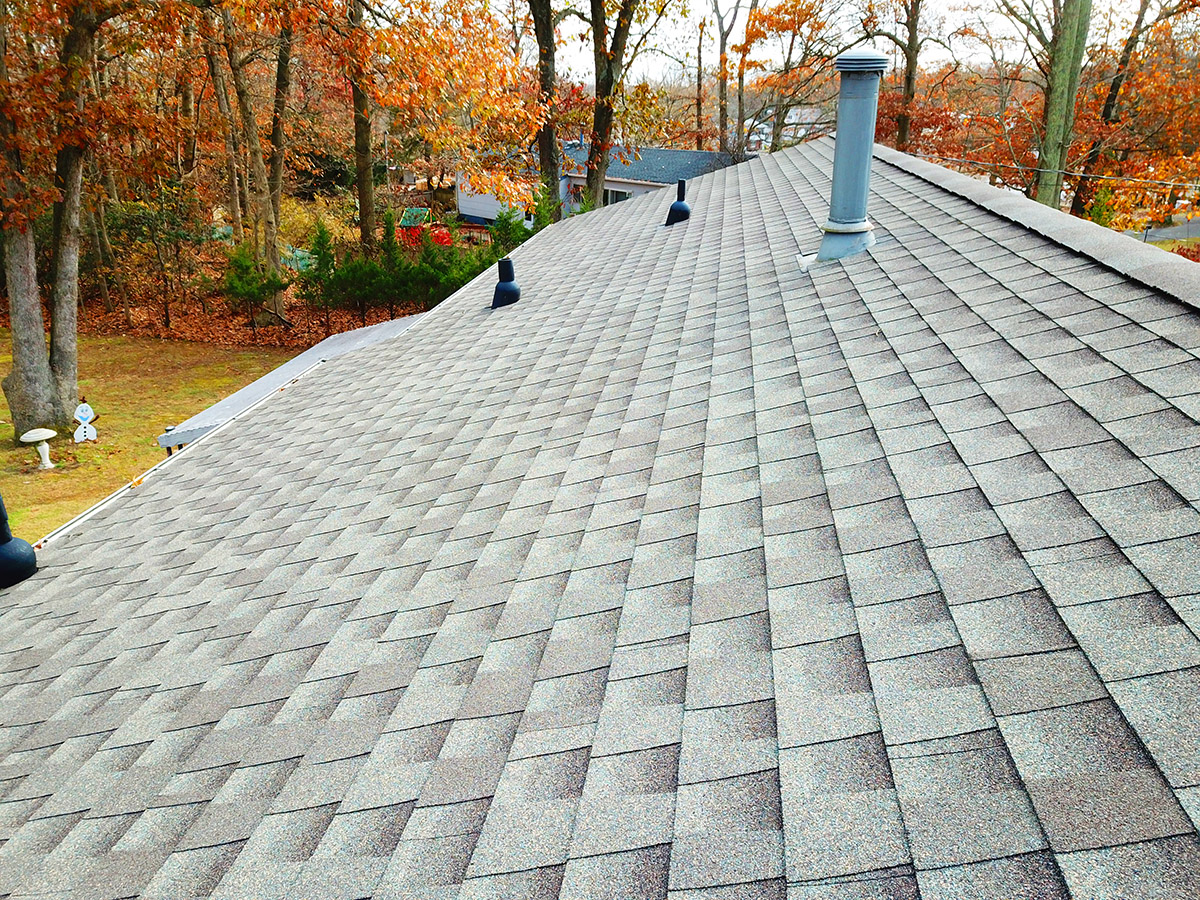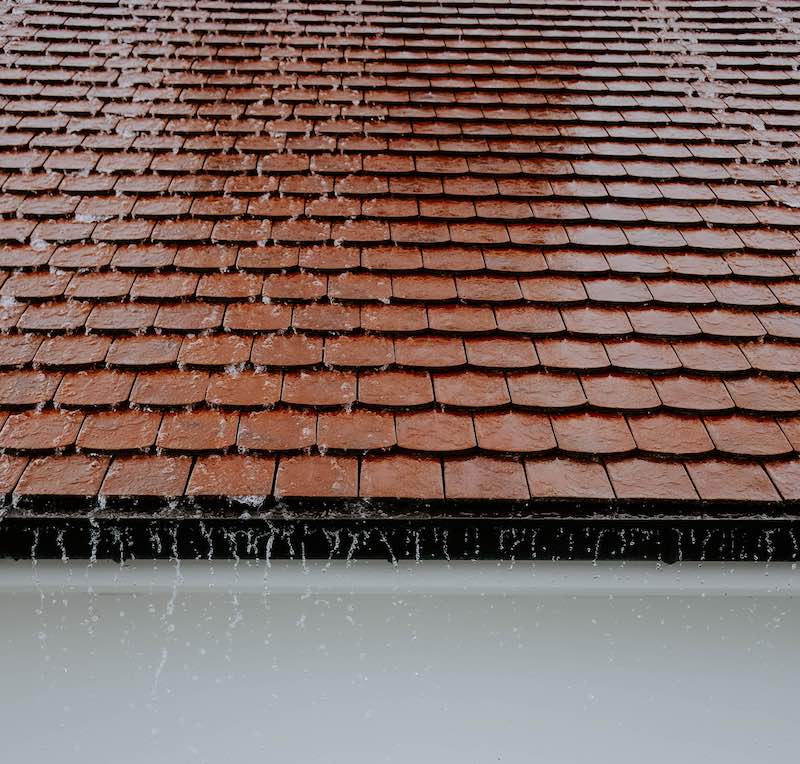What Should I Do If My Roof is Leaking?
Posted by Corey Zeller Comments Off on What Should I Do If My Roof is Leaking? Construction, Roofing
What Should I Do If My Roof is Leaking?
If you spot a roof leak it means you should have already had your entire roof replaced. A leaky roof that’s under 10 years of age is most likely the result of poor workmanship, but a roof leaking that’s 15 years or older is a sign that you waited far too long. And you don’t want to wait any longer because roof leaks might mean that more harm is on the horizon.
That could significantly increase the cost of replacing your roof if water ruins your insulation, drywall, plywood, paint, electrical system, etc. So, don’t delay!
How to Identify a Leak
If your roof is over 15-years-old then it’s approaching the age when it should be replaced. If age isn’t motivation enough, then the cost of repair should be one of the reasons why you should never delay getting your roof replaced. Remember, the longer you wait the costlier the damage may be! But if even savings and pragmatism isn’t motivation enough, then visual confirmation may be what it takes to get you to get to work.
If you can’t spot a water leak just by looking up at your ceiling, then you may want to conduct a more thorough investigation. To do that, wait for heavy rain and go into your attic (or drench your roof with a hose). Since water reflects light you should bring a flashlight with you to identify any wet spots. The place where you spot the water damage may not be the actual location of the leak since water can pierce the roof in one place and run downward until soaking through the ceiling elsewhere. Regardless, once you see the leak call a contractor.
Alternatively, you can hire a roofing contractor before even seeing a leak and have them do a routine inspection. They’ll do a free roof inspection to give you an estimate because they want to get the job. Meanwhile, you’ll find out if it’s time for a roof replacement! And you’ll def want a roof replacement. That’s because spot repairs undermine the integrity of your roof and are the equivalent of throwing your money away.
What a Does a Leak in My Roof Mean?
A leak means you waited too long to replace your roof. Several situations may be the cause of your leaking roof, each of which is a symptom in and of itself that you waited too long to replace your roof.
Granules:
The shingles that make up many roofs are either asphalt shingles or made out of fiberglass. When the shingles exceed 15 years in age, you start to see the visual toll of all that wear and tear. The fiberglass begins to fall away from the asphalt, collecting around your house. When this happens, it’s the equivalent of having bald tires on your car. Time for a replace!
Worn/Damaged Shingles:
As your shingles age, they begin to get brittle. When your shingles get brittle, they start to crack, fracture, and even fly off your roof. In many cases, you’ll even be able to spot from your lawn that your shingles are peeling or curling up. These visual cues are often a sign that your shingles are about to go airborne and land somewhere in your yard as soon as you have heavy winds or rain.
Algae/Mold:
When the granules come off your roof, the shingles cease to be water resistant. This means your roof can start soaking up water, laying the foundation for mold and algae growth. Nails popping or a shingle getting brittle lead to a peeling roof, creating the perfect dark and moist environment for algae and mold. If you see black streaks running down your roof then what you’re actually seeing is mold and algae.
Flashing or Cement Damage:
Metal flashing or roof cement is installed in the areas where shingles meet wall and chimneys to prevent leaks. One way to tell that it’s time to replace your roof is if you notice cracks in your flashing or cement, or if the flashing begins to lift away or even rust. This is also true of any damage to your plumbing vent boots too.
Why Should I Replace my Roof?
You may be only considering a roof leak repair rather than replacing it with a new roof. This would be a mistake! Spot repairs only undermine the integrity of your roof by the time your roof is old enough to replace. That’s because the shingles become so brittle that the very act of repairing a leak will damage your brittle shingles.
Additionally, if you go the route of adding a second layer of shingles on top of a roof in need of repair you’re making your roof hold more weight than it’s designed to hold, which can have unintended negative consequences, and you’re also creating an ideal environment for mold and algae growth.
Why?
Because the first layer of shingles may act as a sponge that soaks up water while the second layer of shingles provides the darkness mold and algae loves! And since some spot repairs now mean more spot repairs later, what all your repairs add up to is money thrown to the wind that could have been put toward the cost of replacing your roof altogether!
How Quickly Can a Roof Be Replaced?
You don’t want to wait until a leak appears to replace your roof because there are ideal times and unideal times of year for a roof to be replaced. If it’s too hot, then the shingles will get hot enough that walking on them will lead to roof damage. Additionally, it will be so hot on the roof that the conditions will adversely affect the workmanship. When the temperature outside is over 85°, it may be as hot as 130° on your roof! For this reason, most roofing companies have hard limits on what temperatures they’re willing to work in.
Similarly, if the temperature won’t exceed 40° many roofing companies won’t work either. That’s because shingles are kept in place by nails and adhesive strips, and the glue in those strips is activated by the radiant heat of the sun. If the temperatures won’t get high enough then you’ll have to wait for those strips to get activated, and during that time the shingles may peel, curl or blow off if a severe enough storm comes around. Plus, if it’s too cold then the shingles will become brittle enough that stepping on them might lead to damage.
If, however, your getting your roof repair when the temperature is fine, then there are a few factors that will impact the speed with which your roof is replaced. These factors won’t lead to significant delay as much as they will impact how long it takes to schedule the job and how long it takes to get the job done. Depending on your roof, expect a full replacement to take between one and a few days.
Pitch:
A roof’s pitch is its steepness. The steeper the roof the longer it takes to replace your roof due to safety concerns. A steep roof may require equipment and planning that a flat roof doesn’t require. So, if your roof is steep it will take a little longer to plan the repair, and it may also impact the cost.
Complexity:
The more complex the roof the longer it’ll take to replace. Each segment of your roof is known as a facet. The typical A-frame roof only has two facets– one on each side of your home. But there’s a greater variety of roof than just one, and the more facets the more challenging the job.
Flashing:
Made out of galvanized steel or aluminum, flashing is installed in areas where the roof meets the wall and in and around roof protrusions to prevent water damage. Flashing also goes around chimneys, skylights, vents, dormers, and anything else that breaks up the contiguous nature of roofing material. Given how importance flashing is, it requires extra time and care to install.
Valleys:
Any point where two planes meet is known as a valley. Valleys also increase the amount of time it takes to replace a roof because the require additional care to replace correctly.
Cost of Replacement
The longer you wait the pricier it may be to replace your roof given the likelihood of increased damage. If you get to work fast, then a replacement, depending on complexity, may run between $7,000 and $15,000. This number may seem like a lot, but considering that the roof is one of the most important parts of your house then you absolutely do not want to skimp.
If, however, you’ve spotted a leak and are caught off guard, then you may find yourself wondering, “How do I pay for a roof with no money?” Luckily, there are several options. You can take out low-interest loan if you have enough equity in your home; you can do a cash-out refinancing where you get a new mortgage with more accommodating terms along with a solid chunk of cash that you can use to pay for replacing your roof (among other things); you can pay with your credit card; you can seek assistance from a charity, crowdfunding, or government grant; etc. There are many options available so you don’t have to compromise your home!
Don’t Wait!
As you can see, waiting to replace your roof is one of the worst moves you can make as a homeowner. That’s why you don’t want a leak to be the reason you reach out to a contractor. Luckily, a leaking roof might just be the wake up call you need to take care of things before things get worse!
Free Roof Estimates
"(required)" indicates required fields


